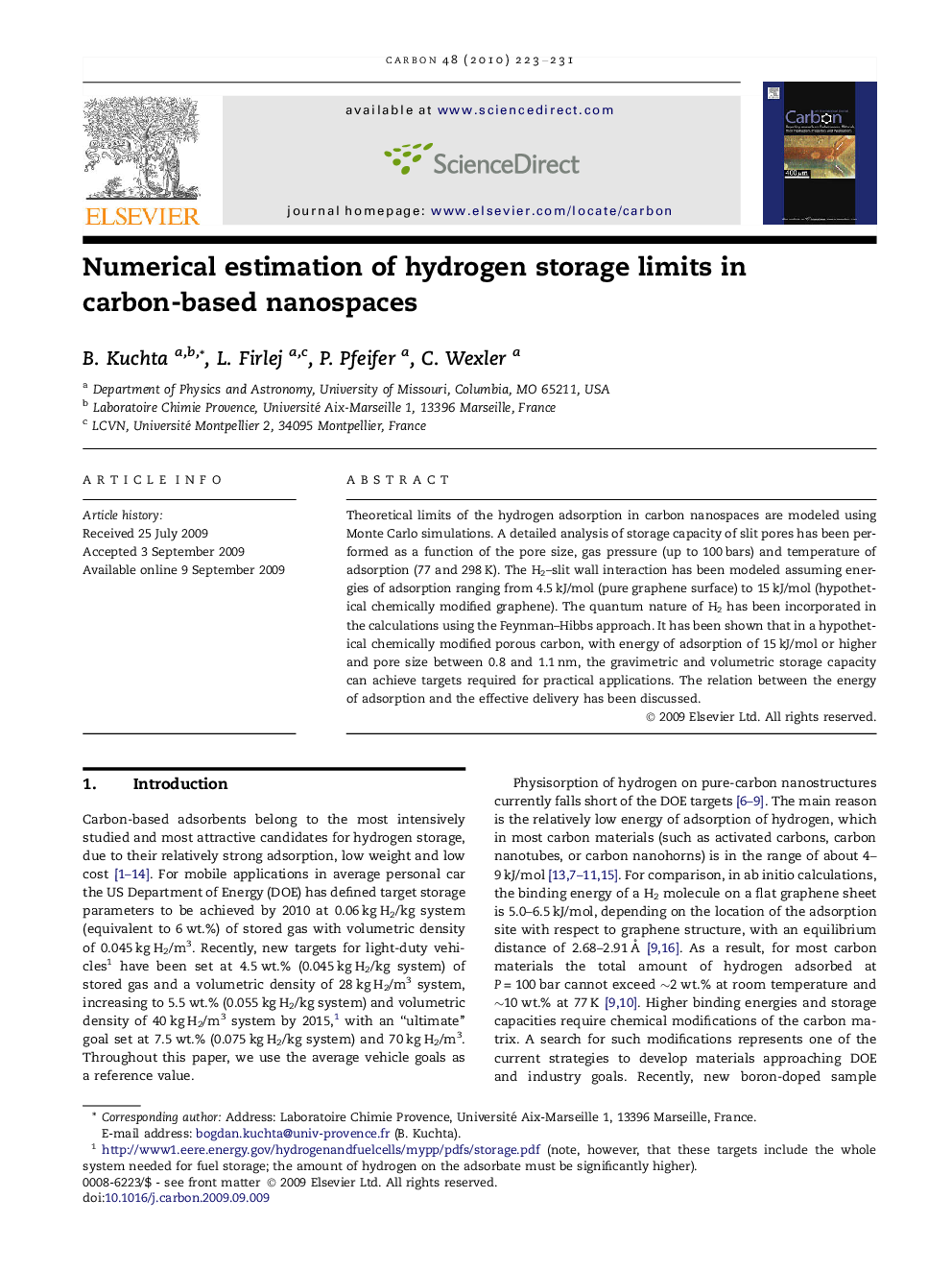| Article ID | Journal | Published Year | Pages | File Type |
|---|---|---|---|---|
| 1417305 | Carbon | 2010 | 9 Pages |
Abstract
Theoretical limits of the hydrogen adsorption in carbon nanospaces are modeled using Monte Carlo simulations. A detailed analysis of storage capacity of slit pores has been performed as a function of the pore size, gas pressure (up to 100Â bars) and temperature of adsorption (77 and 298Â K). The H2-slit wall interaction has been modeled assuming energies of adsorption ranging from 4.5Â kJ/mol (pure graphene surface) to 15Â kJ/mol (hypothetical chemically modified graphene). The quantum nature of H2 has been incorporated in the calculations using the Feynman-Hibbs approach. It has been shown that in a hypothetical chemically modified porous carbon, with energy of adsorption of 15Â kJ/mol or higher and pore size between 0.8 and 1.1Â nm, the gravimetric and volumetric storage capacity can achieve targets required for practical applications. The relation between the energy of adsorption and the effective delivery has been discussed.
Related Topics
Physical Sciences and Engineering
Energy
Energy (General)
Authors
B. Kuchta, L. Firlej, P. Pfeifer, C. Wexler,
